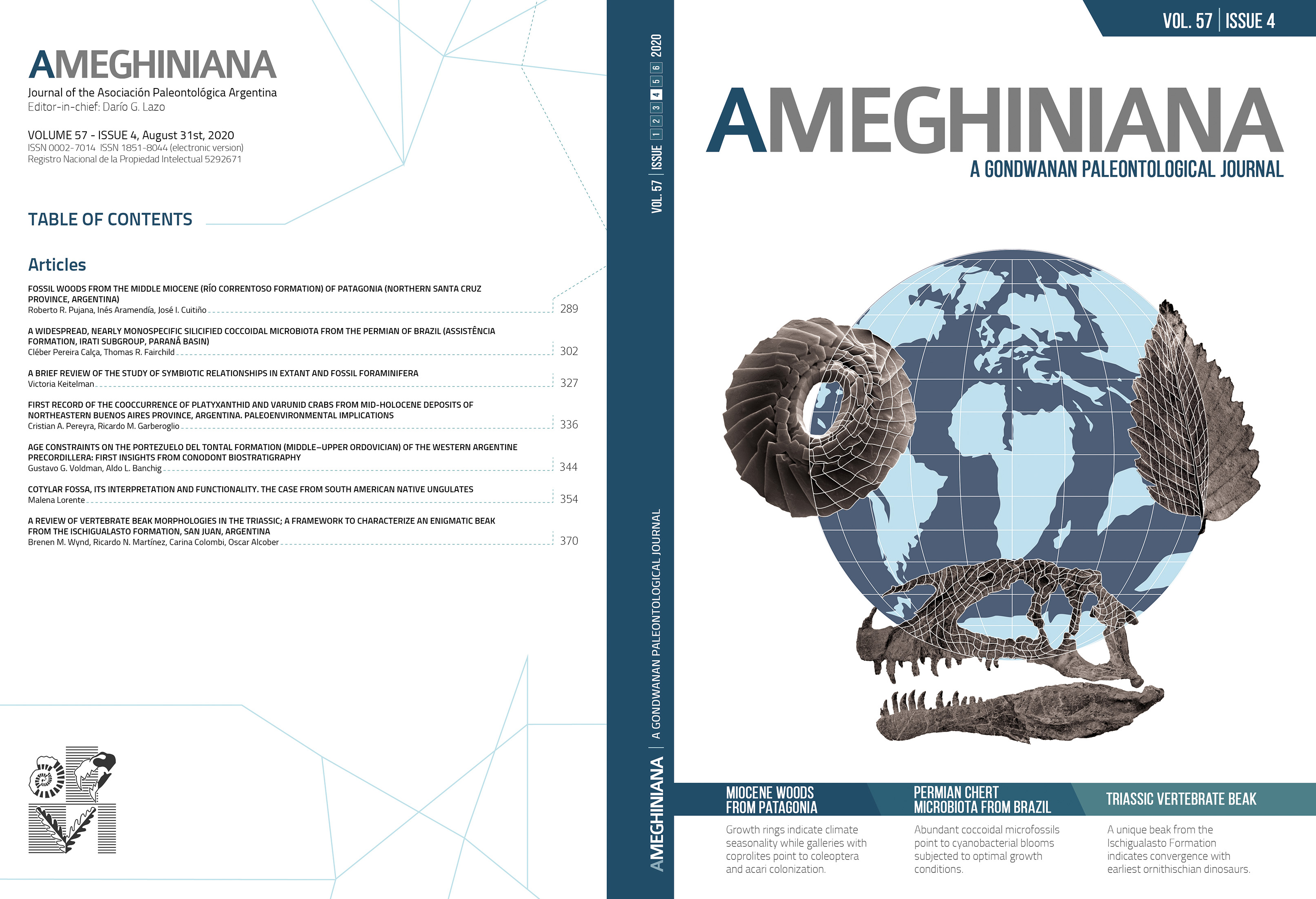AGE CONSTRAINTS ON THE PORTEZUELO DEL TONTAL FORMATION (MIDDLE–UPPER ORDOVICIAN) OF THE WESTERN ARGENTINE PRECORDILLERA: FIRST INSIGHTS FROM CONODONT BIOSTRATIGRAPHY
DOI:
https://doi.org/10.5710/AMGH.26.03.2020.3296Keywords:
conodont, biostratigraphy, Darriwilian, Ordovician, Portezuelo del Tontal Formation, Precordillera, ArgentinaAbstract
The first conodont fauna recovered from the lower levels of the Portezuelo del Tontal Formation (PTF) in the Sierra del Tontal, San Juan Province, is analysed, providing a precise biostratigraphic control for the scarcely fossiliferous, thick Ordovician siliciclastic sequences of the Western Argentine Precordillera. In the studied Cerro Cóndores stratigraphic section, the PTF is characterized by sandstone beds, with few with minor calcareous reaction, deposited under medium energy, open-marine, siliciclastic shelf conditions. The recovered assemblage consists of 50 conodont elements, including Ansella jemtlandica (Löfgren), Costiconus costatus (Dzik), Drepanodus arcuatus Pander, Parapaltodus simplicissimus Stouge, Paroistodus originalis (Sergeeva), Periodon macrodentatus (Graves and Ellison), Protopanderodus graeai (Hamar), and Spinodus spinatus (Hadding) as most conspicuous species. After the biostratigraphic assessment of species of the Paroistodus horridus complex, the PTF conodont asemblage is referred to the Darriwilian (Middle Ordovician) Yangtzeplacognathus crassus Zone, a critical interval in the tectonostratigraphic history of the Precordillera. The collection also contains reworked conodont specimens whose biostratigraphic ranges coexist during the latest Floian (Early Ordovician) Oepikodus intermedius Zone. The conodont assemblage from the PTF allows for a precise correlation with the eastern and central domains of the Precordillera, as well as other regions of the world, improving the knowledge on the dynamics of the Ordovician Precodilleran basin and the palaeogeographic distribution of its faunas.Downloads
Published
Issue
Section
License
Authors publishing in Ameghiniana have the option of making their article freely available online. Authors opting for the Open Access must pay a fee of $300 (US dollars) to cover article-processing costs and to ensure the article is made open access. Please contact the Production Team after the acceptance of your manuscript if you are interested in making your article Open Access. This option implies by default a license Creative Commons Attribution Non-Commercial-NoDerivs License (CC BY NC ND). If your funding institution requires a different licensing option please communicate this to the Production Team after the acceptance of your manusctipt.











